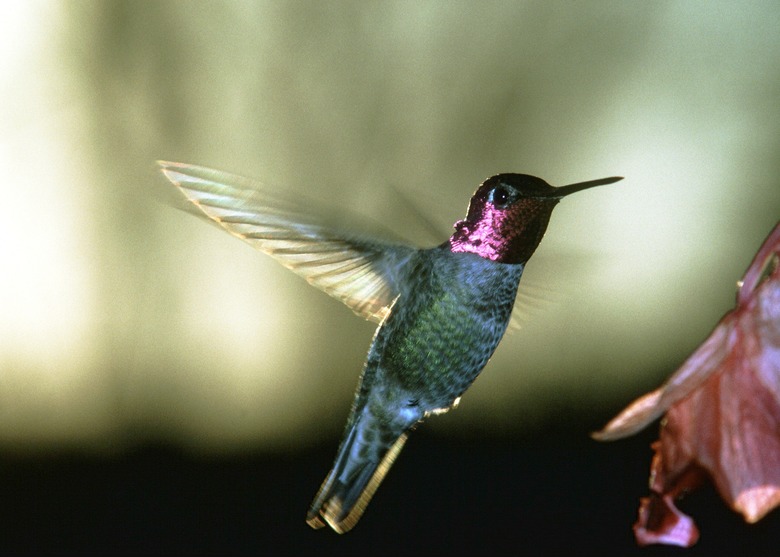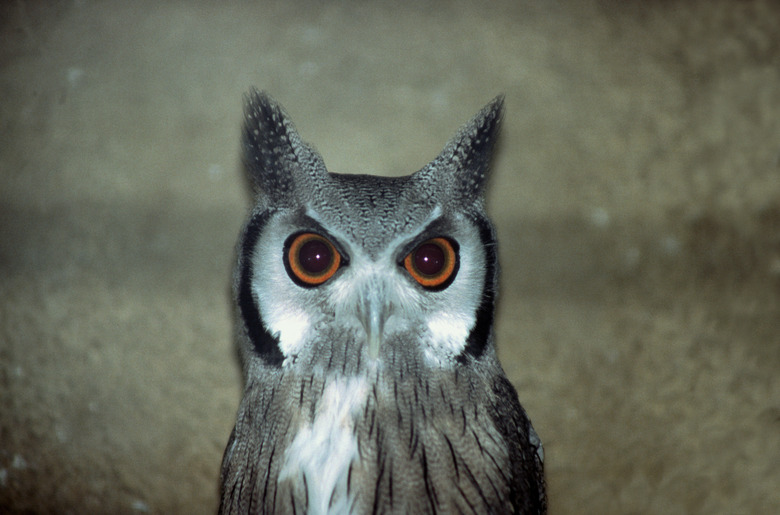What Do Wild Birds Eat?
What wild birds eat depends on the type. There is tremendous variety in bird diet between the different families of birds and there is no simple bird's food list. Some birds eat only insects or seeds. Others are true omnivores that devour nearly anything. Birds forage, hunt and rely on humans for food. The location affects available food choices as does the season: winter birds may rely on different food sources than they do in the summer.
Tree-clinging birds
Tree-clinging birds
Birds that cling to trees are woodpeckers, nuthatches and creepers. Woodpeckers generally eat bugs and grubs they find in trees. They will, however, fly low and swoop to pluck bugs from the air. Some species, such as the Red-headed woodpecker, store nuts and acorns. Others include fruits in their diet. Nuthatches eat seed and insects. The diet of creepers, named for their habit of creeping up tree trunks, consists mostly of spiders and soft insects. They find these by using curved bills to prod the tree trunks.
Perching birds
Perching birds
The perching group is quite large, ranging in size from hummingbirds to ravens. Most songbirds are in this collection. Because of the assortment, the diet is diverse. The smallest birds — hummingbirds — feed almost exclusively on flower nectar, but they also eat bugs. Finches eat seeds. The American Goldfinch is often seen perching atop sunflowers and echinacea picking the seeds. Thistle seed is another favorite. Magpies, crows and jays are omnivorous birds. They are not picky and consume meat, insects, fruits, seeds and vegetables.
Swallows and Pigeons
Swallows and Pigeons
Swallows spend the majority of time flying, feasting primarily on insects. Some varieties, such as the tree swallow, also eat berries. Though not technically a swallow, the swift has similar eating and hunting habits. The swift never perches and eats only flying insects. Pigeons and doves are a familiar site in urban areas. Subsisting in some cases strictly on human handouts, diet staples consist of fruits, seeds and nuts.
Birds of Prey
Birds of Prey
Owls, falcons, hawks and eagles are all birds of prey. Owls are nearly all nocturnal; the snowy owl is an exception. Owls hunt for rodents, crayfish, waterfowl, rabbits, lizards and frogs. The very small elf owl eats insects almost exclusively. Hawks fly high in the air in search of prey, hunting small animals, birds, lizards, snakes and insects. The well-known bald eagle primarily fishes, swooping over the water and grabbing fish with its talons. Falcons feed mostly on other birds. The peregrine falcon, making a comeback after a decline in numbers, often hunts the pigeons in urban areas.
Water birds
Water birds
The webbed-foot birds that spend much time swimming include ducks, geese and swans. The diet is quite varied — vegetation, fish, insects and crustaceans. Some also consume seeds. Gulls are also web-footed, but spend a lot of time in the air. An opportunistic bird, gulls will eat almost anything: garbage, eggs, young birds, crustaceans, insects and fish.
References
- National Audubon Society Field Guide to North American Birds; John Bull,John Farrand, Jr.; 1994
Cite This Article
MLA
Arbuckle, Kit. "What Do Wild Birds Eat?" sciencing.com, https://www.sciencing.com/do-wild-birds-eat-5390496/. 16 July 2018.
APA
Arbuckle, Kit. (2018, July 16). What Do Wild Birds Eat?. sciencing.com. Retrieved from https://www.sciencing.com/do-wild-birds-eat-5390496/
Chicago
Arbuckle, Kit. What Do Wild Birds Eat? last modified March 24, 2022. https://www.sciencing.com/do-wild-birds-eat-5390496/





